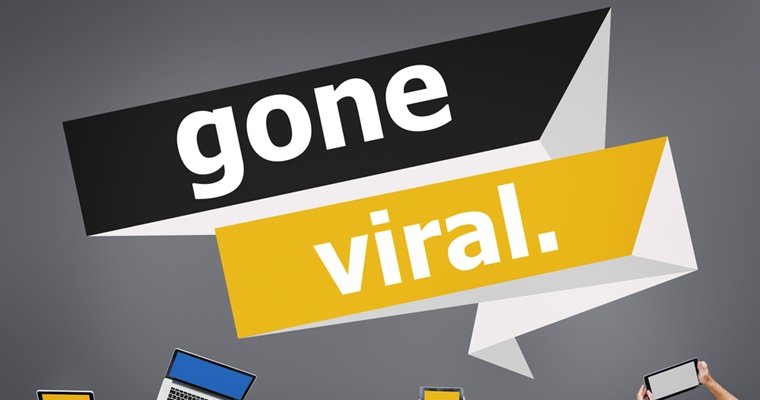
What Works and What Doesn’t When Creating Viral Content. Everyone is looking for the one key to making content go viral in the frantic world of digital marketing and social media. We’ve all witnessed it: a random video, meme, or blog post goes viral, gets millions of views, and takes over every platform.
But here’s the big question: What makes that happen? And perhaps more importantly, how can you accomplish creating viral content for your brand? Let’s be honest creating viral content andgoing viral isn’t just luck. It’s part psychology, part creativity, and a whole lot of strategy. I’ve studied and tested these patterns for creating viral content as a NextGen digital marketing expert to find out what really makes content explode online and what doesn’t. We’re going deeper than surface-level guidance in this post. We’ll break down
What actually works when it comes to creating viral content
- The common mistakes that kill your chances
- How to turn viral moments into lasting growth
- No fluff, no gimmicks—just actionable insights you can apply today.
What exactly is Virulence’s Root Cause? First things first: viral content is not about luck but rather about connection. Before we get into strategies, let’s clarify this. There is more to sharing content than simply passing on information.They’re saying:
“This made me feel something.”
“This is so me.”
“You’ve got to see this too.”
That kind of reaction doesn’t happen by accident. Viral content usually hits one or more of these psychological triggers:

1. People feel something Creating viral content . Sharing is primarily motivated by emotion. Whether it’s laughter, inspiration, anger, or nostalgia—if your content makes people feel, it’s got a much better shot at getting shared.
Consider the most recent viral video you saw. Chances are, it made you laugh out loud or feel deeply moved. That’s no coincidence.
2. If your content helps them impress their friends or start a conversation, it has value—and value means shares.
This is why “Did you know…” facts, behind-the-scenes secrets, or clever hacks tend to do well.
3. It’s helpful. Content that solves a problem or teaches something useful is highly shareable. Everyone loves to pass along tips, tricks, or guides that make life easier.
Whether it’s “How to grow your Instagram in 30 days” or “The ultimate packing checklist,” practical = powerful.
4. It Tells a Story, We are wired to tell stories. We remember them more than facts. Viral content often has a narrative—a beginning, middle, and end—even if it’s just in a 60-second video.
People are more likely to share something if they can follow it and feel a part of it.
What Works: Tactics That Spark Viral Success.

As a NextGen digital marketing expert, I’ve used these methods to help creators, startups, and brands go from invisible to unmissable.
1. Start with a Killer Hook
The first 3 seconds are everything. That’s when people decide whether to scroll past or stay locked in.
On TikTok, it could be a bold caption like “I spent $0 to make $5K and here’s how.”
It might begin with the question, “What if you could grow your business without spending a dime?” on YouTube. It could be a strong text overlay or an unexpected image on Instagram that serves as a visual hook. It’s not necessary for your hook to be clickbait. It just needs to draw people in quickly. Pro Tip: Lead with the most surprising, emotional, or valuable piece of the story. Don’t put it off until the end.
2. Keep It Real, Relatable, and Raw
People are sick of corporate content that is overly polished. The stuff that goes viral now often feels raw and real. It is genuine. It’s imperfect. It’s human.
Think:
- clips from behind-the-scenes Honest confessions
- Messy moments
- Unfiltered reactions
This is especially true for younger audiences and Generation Z. They crave realness over perfection.
That’s why lo-fi videos and iPhone footage often outperform studio-quality content. As a NextGen digital marketing expert, I tell clients: don’t overthink production—overthink connection.
3. Ride Trends—But Put Your Spin On It
Taking advantage of current trends can increase visibility, particularly on YouTube Shorts, Instagram Reels, and TikTok. But don’t just copy what everyone else is doing.
To be noticed: Add your brand’s voice or humor.
Use trending audio with a twist for creating viral content
Combine multiple trends to create something new.
The brands that succeed are the ones who adapt trends, not just repeat them.
Example: A gym brand using a trending sound to show “What your body thinks vs. what your trainer sees”—funny, relevant, and on-brand.
4. Make It Shareable—Not Just Watchable
It is passive to watch. Sharing is effective. To boost shares:
Include a strong emotional or social angle (“You need to see this if you’re a freelancer…”).
End with a call to action (such as “Send this to your team” or “Tag someone who needs this”). Make use of storytelling that is relatable to all people. A regular post can sometimes become a viral one with just a single line. For example:
“This made me cry—I wasn’t ready.”
That kind of relatability fuels the viral engine.
5. Leverage User-Generated Content (UGC)
Some of the best creating viral content viral campaigns don’t come from brands—they come from their audiences.
Encourage your followers to:
- Recreate a challenge
- Duet or stitch your video
- Share their own stories related to your topic
- Tag you in their versions
It causes a chain reaction. One video becomes dozens, then hundreds. As an expert in NextGen digital marketing, I always assist clients in developing systems and creating viral content that transform viewers into co-creators. —
6. Use Humor (Even If You’re a “Serious” Brand)
Humor breaks down barriers, disarms resistance, and creates instant connection.
You don’t need to be a comedy brand to be funny. Even finance, tech, or education brands can use:
- Self-deprecating jokes
- Industry memes
- Funny analogies
- Playful roasting
People are more likely to share what makes them laugh—especially if they can laugh at themselves while doing it.
7. Post at the Right Time, on the Right Platform
If it is posted at the wrong time or in the wrong place, even great creating viral content can fail. Know your audience:
Are they on Instagram at night or LinkedIn in the morning?
Do they prefer short TikTok bursts or lengthy YouTube explainers? Use platform analytics and experiment with posting schedules. And always think about context. What works on X (Twitter) might not land on Pinterest.
At NextGen digital marketing, we help brands map out platform-specific content calendars to maximize exposure and shares.
What Doesn’t Work: Common Mistakes That Kill Virality
Just like there’s a blueprint for success, there’s also a graveyard full of content that never made it past a dozen likes. The truth is that most attempts to go viral fail, not because of bad ideas but because of bad execution. As a top notch digital marketing expert, I’ve seen talented creators and brands sabotage their own content with avoidable errors.
Let’s break down what not to do if you actually want to go viral.

1. Being too pushy too quickly This is the number one killer of engagement.
If your content feels like an ad, people scroll past. You will lose them if your CTA is displayed before the viewer forms an emotional connection. Content should build trust first, sell second.
Instead of:
“Buy our item right away! It’s the best!”
Try:
“Here’s how our founder solved a real-world problem and made a product out of it.” This approach tells a story. It attracts interest. It gives value. The sales pitch comes naturally after interest is earned.
2. Trying to Reach Everybody In the effort to “go viral,” many brands water down their content to make it palatable to everyone. But here’s the secret: viral content isn’t universal—it’s specific.
When you speak directly to a certain group, that group feels seen. And they share it with other people who are like them. So instead of vague:
“This is for everyone struggling right now…”
Try:
“This is for every freelancer who’s had a client ghost after delivering the final draft.”
Now you’ve got a hook that resonates deeply. Specificity breeds virality.
3. Content that is over-polished Polish is good. But over-polish? It kills authenticity.
In some situations, perfect lighting, scripted lines, and flawless editing can work, but more often than not, they distance you from your audience. If it feels like an ad, people tune out.
Instead, aim for a balance. Clean but real. Edited but still conversational.
As a NextGen digital marketing expert, I often advise creators to film “one-take” versions of their ideas and test them. You’ll be surprised how often the least scripted version performs best.
4. Ignoring Trends Entirely
Yes, originality matters. But ignoring trends completely can leave you out of the conversation.
You don’t need to be a trend-chaser. But being trend-aware allows you to ride waves while staying true to your voice.
Trends give you:
- Built-in relevance
- Higher discoverability
Knowledge of your target audience Find a way to make them your own. Relevance + originality = gold.
5. Bad Thumbnails, Titles, or Captions
You could have the best video creating viral content or article in the world—but if your thumbnail or caption sucks, it’s game over.
Consider these to be your billboard. They need to:
- Attract attention Spark curiosity
- Communicate emotion
Avoid generic titles like “My day” or “Check this out.” Instead, say:
“I quit my job with zero backup plan. Here’s what happened next…”
The goal is to create an itch your audience has to scratch with Creating viral content